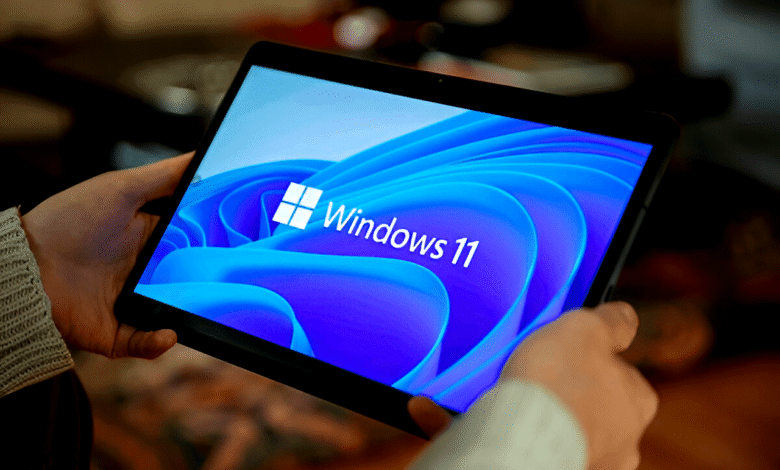How to Dual Boot Linux and Windows 11 Safely
Dual boot Linux and Windows 11 safely with guide. Learn partitioning, Secure Boot setup, and GRUB configuration for seamless switching.

Dual booting Linux and Windows 11 is a powerful way to experience the flexibility of open-source software while retaining access to Windows-exclusive applications. Whether you’re a developer needing Linux for coding or a gamer relying on Windows 11, setting up a dual-boot system ensures you get the best of both worlds. However, improper installation can lead to boot conflicts, data loss, or system instability, making it essential to follow a structured approach.
This guide will walk you through the safe and efficient process of installing Linux alongside Windows 11 without disrupting your existing setup. From preparation and partitioning to bootloader configuration and troubleshooting, we’ll cover everything you need to create a seamless dual-boot environment.
How to Dual Boot Linux and Windows 11 Safely
Preparing Your System for Dual Booting
Before installing Linux alongside Windows 11, you must backup important data to prevent accidental loss. Use an external drive or cloud storage to save critical files. Next, ensure your system meets the requirements for both operating systems. Windows 11 needs Secure Boot and UEFI mode, while most Linux distributions support these features but may require additional configuration. Check your disk space and free up at least 20-30GB for the Linux installation. You can use Windows Disk Management to shrink your existing partition. Additionally, disable Fast Startup in Windows 11 to avoid conflicts with Linux during boot.
Creating a Bootable Linux USB Drive
To install Linux, you’ll need a bootable USB drive. Download your preferred Linux distribution (like Ubuntu, Fedora, or Mint) in ISO format. Use tools like Rufus (Windows) or BalenaEtcher to create a bootable USB. Ensure the tool writes in DD mode for UEFI compatibility. Insert the USB, restart your PC, and enter the BIOS/UEFI menu (usually by pressing F2, F12, or DEL). Disable Secure Boot temporarily if your Linux distro doesn’t support it, though most modern distributions do. Set the USB as the primary boot device and save changes.
Partitioning the Disk for Linux Installation
Proper disk partitioning is crucial for a successful Linux installation alongside Windows 11. Before beginning, use Windows’ Disk Management tool to shrink your NTFS partition, leaving adequate unallocated space (minimum 30GB recommended). During Linux installation, select manual partitioning (“Something Else” in Ubuntu-based distros) and create: a root partition (/, ext4, 20-30GB for system files), a swap area (equal to your RAM size for hibernation support, optional on systems with 8GB+ RAM), and a home partition (/home, ext4, remaining space for personal files).
Installing Linux Alongside Windows 11
Installing Linux alongside Windows 11 requires careful preparation to ensure a smooth dual-boot setup. First, create a backup of your important data and use Windows Disk Time management to shrink your existing partition, freeing up at least 20-30GB of unallocated space. Next, create a bootable USB with your preferred Linux distribution using tools like Rufus or BalenaEtcher, then reboot into your BIOS/UEFI to disable Secure Boot (if needed) and set the USB as the primary boot device. During installation, choose the “Install alongside Windows 11” option or manually partition the disk, creating root (/), swap, and home partitions while ensuring the bootloader installs to the EFI system partition.
Configuring Boot Order and Secure Boot
Configuring Boot Order in BIOS/UEFI
To ensure your system boots into the GRUB menu (allowing OS selection), access your BIOS/UEFI settings during startup (typically by pressing F2, F12, DEL, or ESC). Navigate to the Boot Priority section and move the Linux bootloader (usually labeled “ubuntu”, “grub”, or your distro name) above Windows Boot Manager. Save changes before exiting this ensures GRUB loads first, giving you the option to choose between Linux and Windows at startup. If GRUB doesn’t appear even after this adjustment, you may need to reinstall it from a live Linux USB.
Managing Secure Boot for Linux Compatibility
Most modern Linux distributions (such as Ubuntu, Fedora, and openSUSE) support Secure Boot, but some may require additional configuration. If your system fails to boot Linux, try disabling Secure Boot temporarily during installation. After setup, you can re-enable it Ubuntu and Fedora will work seamlessly, while other distros might need signed kernels or Manual MOK (Machine Owner Key) enrollment. If you use custom kernel modules or proprietary drivers, ensure they are Secure Boot-compatible to avoid boot errors.
Re-enabling Secure Boot After Installation
Once Linux is successfully installed, you can re-enable Secure Boot in BIOS/UEFI if your distribution supports it. For Ubuntu-based systems, this should work without issues, as Canonical provides signed bootloaders. If you encounter boot failures, check your distro’s documentation some may require importing keys or using shim-loader. If problems persist, keep Secure Boot disabled or consider using a different Linux distribution with full Secure Boot compatibility. Properly configuring these settings ensures security system while maintaining a functional dual-boot setup.
Troubleshooting Common Dual-Boot Issues
GRUB Bootloader Not Appearing
If your system skips the GRUB menu and boots directly into Windows Boot from a Linux live USB and run sudo update-grub to regenerate the bootloader configuration. Check your BIOS/UEFI settings to ensure the Linux bootloader has higher priority than Windows Boot Manager. Reinstall GRUB completely using sudo grub-install /dev/nvme0n1 (adjust for your disk) if the issue persists.
Windows 11 Missing From Boot Menu
When Windows disappears from GRUB after Linux installation First run sudo os-prober followed by sudo update-grub to detect installed operating systems. Verify the Windows EFI partition still exists using sudo fdisk -l or GParted. If Windows still doesn’t appear, manually add a custom GRUB entry pointing to the Windows bootloader.
Kernel Panic or Initramfs Errors
For system crashes during Linux boot with these errors Boot into recovery mode and run fsck to check filesystem integrity. Try adding nomodeset to kernel parameters if it’s a graphics driver issue. Reinstall your kernel or initramfs.
Dual Boot Time Sync Issues
When clocks show wrong times between OSes Linux typically uses UTC while Windows uses local time – set Linux to local time. Alternatively, configure Windows to use UTC via registry edit (not recommended). Consider using an NTP service to keep both systems synchronized.
Disk Space Allocation Problems
If you need to resize partitions after installation Always back up data first as resizing carries risk of data loss. Use GParted from a live USB for safest partition resizing. For Windows partitions, use Windows Disk Management first before Linux tools.
Read More: How to Speed Up Your MacBook Without Extra Software
Conclusion
Dual booting Linux and Windows 11 safely requires careful planning, but the payoff is worth it unlocking the full potential of both operating systems on a single machine. By following the steps outlined in this guide, you’ve minimized risks like bootloader conflicts, partition errors, or accidental data loss, ensuring a smooth transition between Windows and Linux whenever needed.
With your dual-boot system now properly configured, you can enjoy Windows 11 for gaming and productivity while leveraging Linux for development, privacy, or customization. Remember to keep your system updated and back up important files regularly. Whether you’re a power user or a beginner, mastering dual booting Linux and Windows 11 opens up a world of computing possibilities without compromise.
Can I dual boot Linux and Windows 11 on the same SSD?
Yes, you can install both OSes on one drive by creating separate partitions during installation.
Does dual booting affect Windows 11 performance?
No, each OS runs independently—only one operates at a time, so performance stays unaffected.
What if GRUB doesn’t show Windows 11 at startup?
Boot into Linux and run sudo update-grub to detect Windows and add it to the boot menu.
Is Secure Boot required for dual booting?
Most modern Linux distros support Secure Boot, but some may need it disabled for installation.
Can I access my Windows files from Linux?
Yes, Linux can read/write NTFS partitions (Windows drives), but avoid modifying system files.











